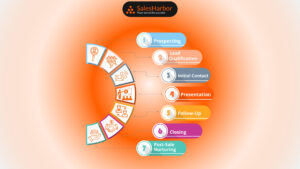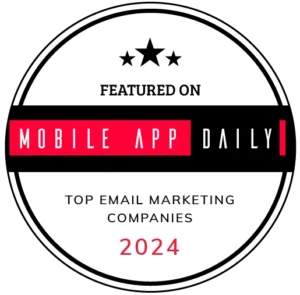The B2B sales cycle is the process businesses follow to turn potential customers into loyal clients. Unlike B2C sales, which are often quick, the B2B sales process takes more time and requires careful planning. It usually involves multiple people making decisions and deals with larger transactions. Knowing how the B2B sales cycle works is important for building strong customer relationships and ensuring steady business growth.
What is the B2B Sales Cycle?
The B2B sales cycle includes all the steps businesses take to find, engage, and close deals with other businesses. It starts with identifying potential customers and ends with keeping those customers happy after a sale. This process is designed to solve specific business problems for clients and requires a personalized approach at every step.
The B2B sales cycle is often more complex than B2C because it involves longer decision-making processes, tailored solutions, and multiple stakeholders. Companies that master this cycle can achieve sustainable growth by creating value for their clients.
Key Stages of the B2B Sales Cycle

1. Prospecting
This is the first step, where you look for businesses that might need your product or service. LinkedIn automation tools can help you find the right customers quickly and easily. Effective prospecting also involves researching industries, understanding customer needs, and identifying decision-makers.
2. Lead Qualification
After finding potential customers, you need to check if they are a good fit for your business. You can use methods like the BANT framework (Budget, Authority, Need, and Timeline) to decide if they are worth pursuing. Qualified leads save time and resources by focusing efforts on prospects with higher chances of conversion.
3. Initial Contact
The first interaction with a potential customer is very important. Sending personalized emails or making phone calls can help you build trust and start a good relationship. This step is about understanding the client’s challenges and aligning your solutions to their needs.
4. Presentation
This step is about showing the customer how your product or service can solve their problems. Focus on explaining the benefits in a way that is easy for them to understand. Visual aids like slides or product demos can make presentations more effective and engaging.
5. Follow-Up
Not every lead converts immediately after the initial presentation. Consistent follow-up is crucial for keeping your offering top of mind. Use follow-up emails, calls, or messages to address concerns, share additional resources, and reinforce the value of your solution. This stage is often the deciding factor for converting hesitant prospects into loyal clients.
6. Closing
In this step, you negotiate the final details and get the customer to agree to the deal. It is important to answer their questions and make sure both sides are happy with the agreement. Techniques like offering limited-time discounts or emphasizing ROI can help close deals faster.
7. Post-Sale Nurturing
Your work doesn’t end after making the sale. Stay in touch with your customers, offer additional help, and suggest other products or services they might find useful. This will help you build long-term relationships. Regular check-ins, feedback surveys, and loyalty programs can strengthen post-sale connections.
How Does It Work?
The B2B sales cycle works as a step-by-step process. For example, you start by finding potential customers, then check if they are a good fit, and finally move on to presenting your solution and closing the deal. Using tools like CRM software can make this process easier by keeping track of your progress and automating repetitive tasks.
Each stage of the cycle feeds into the next, creating a seamless journey for both the sales team and the client. Businesses that leverage data and technology can identify bottlenecks, improve efficiency, and deliver better results.
Conclusion
The B2B sales cycle is a clear plan that helps businesses grow by turning potential customers into long-term clients. By understanding and improving each stage—from prospecting to post-sale support—you can close more deals and build stronger relationships. Take a closer look at your sales process today and find ways to make it better for your business and your customers.
Mastering the B2B sales cycle doesn’t happen overnight, but with the right tools, training, and focus, any business can create a process that drives success. Start optimizing your cycle now and watch your business thrive.
If you’re looking for experts to guide you through optimizing your B2B sales cycle and implementing the most effective strategies, SalesHarbor is here to help. Reach out for a quick intro call to learn more about how we can seamlessly integrate these strategies into your business framework.



